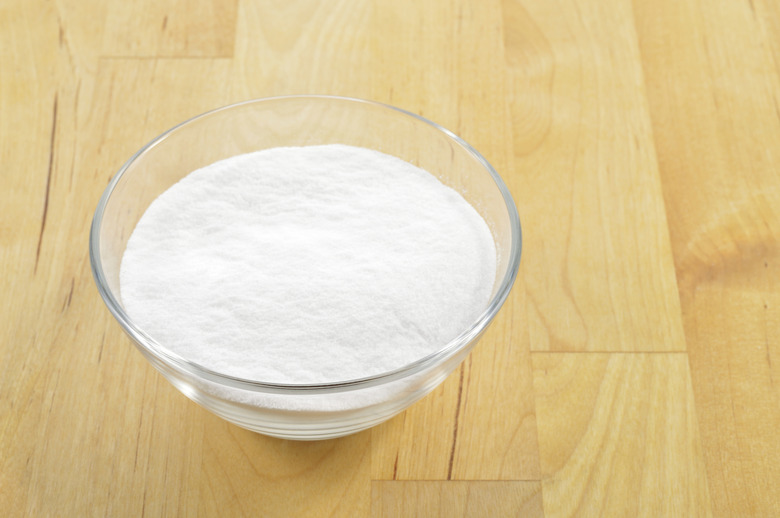Effects Of Sodium Bicarbonate (Baking Soda) On Plant Growth
Sodium bicarbonate, commonly known as baking soda, is occasionally recommended for controlling fungal diseases in plants. However, baking soda treatments are not always effective, and they must be used with care because a buildup of sodium in the soil can negatively affect plant growth.
Using Baking Soda
By itself, baking soda has little effect on fungal diseases. Mixing it with horticultural oil, however, has proven effective against black spot on roses (Rosa spp.), which are hardy in U.S. Department of Agriculture plant hardiness zones 2 through 11, depending on the variety. Even with horticultural oil, baking soda reduces, rather than eliminates, black spot. Information about using baking soda to treat other fungal diseases like powdery mildew is inconclusive. To try using baking soda as a fungicide, mix 1 tablespoon baking soda and 2 1/2 tablespoons of horticultural oil in 1 gallon of water and spray on the plant leaves.
Sodium's Effect on Plants
Repeated use of baking soda in the garden can lead to a toxic buildup of sodium in the soil. When this happens, the soil is refereed to as "sodic" or "salt-affected." Chemically speaking, salts are ionic crystalline compounds, and baking soda is one example. Not all salt compounds contain sodium, however, so soils can be salt-affected without being sodic. High levels of salt and/or sodium prevent plant roots from absorbing water, which results in a drought-like response. Germinating seeds and young plants are particularly vulnerable, and many can be killed by high levels of sodium and salt. In mature plants, sodium and salt hinder root growth, stunt flowering and reduce yields from garden vegetables.
Recognizing Sodic Soil
Soil testing by a reputable soil-testing laboratory is required to determine the exact levels of sodium in the soil. There are, however, visual cues for recognizing when soils are high in sodium and/or salts. Sodic soils have a black powdery residue on the surface and are poorly drained. In soils with both salt and sodium buildup, the soil looks gray, and plants exhibit drought symptoms even if watered. If the soil has a white crust on the surface and the tips of plant leaves look burned, then salt is the problem rather than sodium.
Reducing Sodium Levels
If sodium and salt levels are not very high, extra watering may be enough to correct the problem. Heavy watering washes accumulated sodium deeper into the soil so the plant roots can no longer reach it. To reduce accumulation by half, apply 6 inches of water. However, since high sodium levels reduce drainage, leeching may not be enough to remove a large build up of sodium. These soils should be treated with a calcium source, such as gypsum. The rate of application is based on soil test results. For example, if the soil test indicates a soil exchangeable sodium level of 460 pounds per acre, apply 8 pounds of gypsum per 1,000 square feet.
